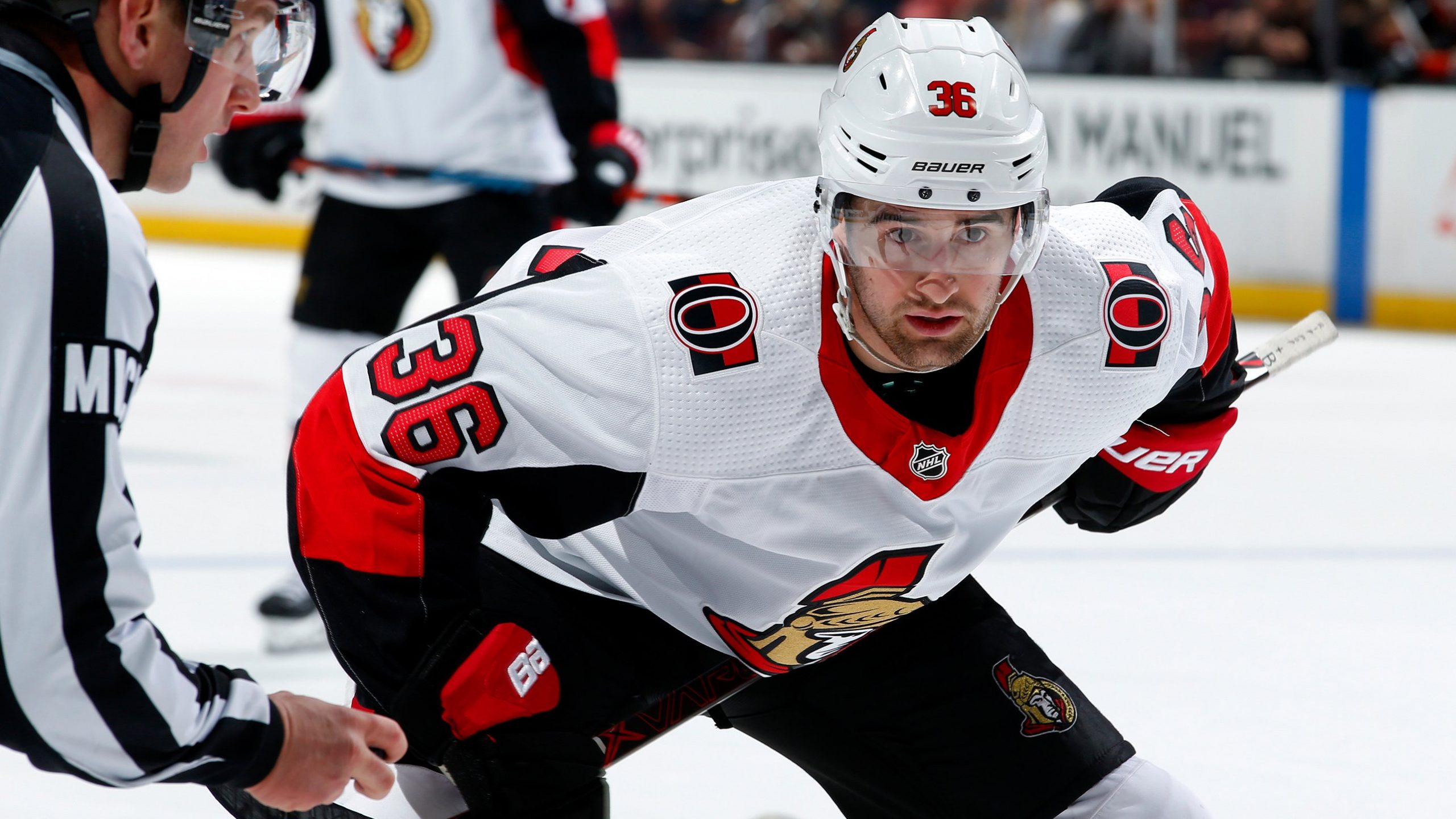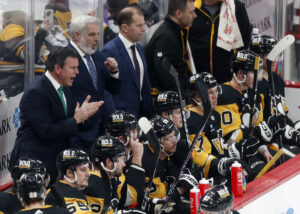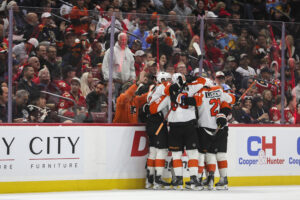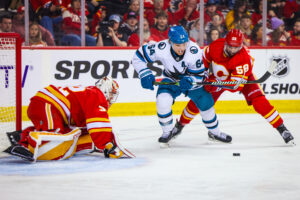Player development seems to always result in more questions than answers. How likely is it for a top pick to pan out? What makes a player a “steal”? Last Word On Hockey has a new series on how to properly develop prospects from all different spots throughout the draft. This week’s piece involves draft picks in the back-half of the first round and how they were used early in their careers.
NHL Player Development Of First-Round Picks
In the span of 2005 through 2015, there were 84 total selections made between 16th overall and 30th overall on forwards playing in North America. Looking at all 84 forwards, they were split into different categories. Those categories were “Forwards Deemed NHL-Ready and Brought In Immediately When Ready,” “Forwards Near NHL-Ready and Brought In Immediately When Near-Ready,” “Forwards Rushed Slightly,” “Forwards Rushed,” “Forwards Forced,” “A Little Patience,” “Patience,” and “Too Much Patience.”
There were 12 forwards who fell into the fourth category, “rushed,” on the list. Of those 12 players, seven made their NHL impacts in their DY+3 season. Those players are Michael McCarron, Brock Boeser, Colin White, Tyler Ennis, Chris Stewart, Quinton Howden, and Josh Ho-Sang. In this piece, we look at Colin White and Tyler Ennis.
NHL Player Development Of Colin White
White, drafted 21st overall in the 2015 NHL draft by the Ottawa Senators, came out of the US National Team Development Program. In his DY-1 season, playing for the U17 squad, he scored 33 goals and 31 assists for 64 points in 47 games, for 1.362 points per game. That ranked 14th out of the aforementioned 84 forwards in DY-1 production. He would follow that up with the U18 squad, scoring 23 goals and 31 assists for 54 points in 54 games, for exactly one point per game. That ranked 58th among those same 84 forwards in DY production. Upon getting drafted, White would join Boston College in the NCAA for the next two seasons.
In his DY+1 season with Boston College, White scored 19 goals and 24 assists for 43 points in 37 games, for 1.162 points per game. That ranked 34th amongst the 82 forwards still outside the NHL in DY+1 production. The following season, White scored 16 goals and 17 assists for 33 points in 35 games, for 0.943 points per game. That ranked 36th out of the 70 forwards still outside the NHL in DY+2 production. Following his second NCAA season, White would join the Senators.
How White Was Used
In his first professional season, White would split between the NHL and AHL. At the AHL level, he played 47 games, scoring 11 goals and 16 assists for 27 points. Meanwhile, he would play 21 NHL games, where he averaged 13:21 time on ice per game. In that role, he scored just two goals and six points. Analytically, there was more than meets the ice. His raw stats don’t credit White enough, but his even-strength offence goals above replacement (EVO) were up at 2.3, which is solid for a rookie. Additionally, his even-strength defence goals above replacement (EVD) was good for a rookie, at 0.3. With his strong, but not high-end, even-strength numbers, White’s overall game also reflected some untapped potential. His wins above replacement (WAR) and goals above replacement (GAR) were both solid at 0.4 and 2.2 respectively.
In his second season, White would play the entirety of the year in the NHL. Playing in 71 games, he averaged 16:12 per game. In a much larger role than the year prior, White recorded 14 goals and 27 assists for 41 points, a very solid out-put. His EVO would drop (2.1) despite the fact his production went up. But, his EVD (3.3) was an impressively high mark for such a young player, and it helped lead his all-situations metrics. His WAR (1.4) and GAR (7.5) were both much-improved. White really put out a season to display why he was selected in the first round and what potential he brings moving forward.
Big Step Back In Year Three
In year three, White would see a very short one-game stint in the AHL, where he scored two points. At the NHL level, he went on to play 61 games, averaging 15:42 per game. The slight drop in ice time, plus a smaller amount of games played, led to a drop in performance. He scored seven goals and 16 assists for 23 points, which isn’t bad but is a step back from the year prior. Analytically, the drop-off was even more noticeable. His EVO (1.6) fell slightly, which isn’t surprising when looking at his point total. But his EVD (0.6) falling as much as it did severly impacted his all-situations impacts, negatively. His WAR (-0.2) and GAR (-1.1) were both below replacement level.
Following that third season, in 2019-20, he played a combined 69 games over the next two seasons. He scored 13 goals and 15 assists for 28 points in that span. White has left the Senators organization and joined the Florida Panthers. The good news for White is that the Panthers have developed a strong pattern of reviving careers or getting more results from unproven guys. Look at Carter Verhaeghe, Jonathan Marchessault, and Sam Bennett as prime examples of that. White could be the next in line.
But, from the looks of it, his injury history is long and his production has been lacklustre over the last three seasons. While his NHL player development path created by Ottawa was not a bad one, as he was given decent sized roles when healthy, he simply could not remain healthy or efficient consistently enough. The Panthers are his best bet to get back to his year two impacts, but this could be his last chance at a strong career worthy of a first-round selection.
NHL Player Development Of Tyler Ennis
Ennis, drafted 26th overall in the 2008 NHL draft by the Buffalo Sabres, came out of the Medicine Hat Tigers organization of the WHL. In his DY-1 season, Ennis scored 26 goals and 24 assists for 50 points in 71 games, for 0.704 points per game. That ranked 45th out of the 84 forwards in DY-1 production. He followed that up with 43 goals and 48 assists for 91 points in 70 games, for 1.3 points per game. That ranked 27th out of the 84 forwards in DY production. After getting drafted, Ennis would play one more season in the WHL and one season in the AHL before making a true NHL impact.
In his DY+1 season with the Tigers, Ennis scored 43 goals and 42 assists for 85 points in 61 games, for 1.393 points per game. That ranked 16th out of the 82 forwards still outside the NHL in DY+1 production. Upon joining the AHL with the Sabres affiliates, the Portland Pirates, Ennis would impress. In 69 AHL games, he scored 23 goals and 42 assists for 65 points, for 0.942 points per game. That ranked 37th out of the 70 forwards still outside the NHL in DY+2 production, as well as first among players playing in the AHL. He would play a big role the following season for the Sabres.
How Ennis Was Used
In his first true NHL season, Ennis would play the full 82 games and average 15:40 per game. In that role, he scored 20 goals and 29 assists for 49 points, decent production in year one. His analytics were fantastic, with an EVO (7.2) anbd an EVD (-0.3) that were better than most players in their rookie years. With those strong even-strength numbers, it’s no surprise that his WAR (2.1) and GAR (11.6) were also very impressive.
In his second season, Ennis would play just 48 NHL games due to two ankle injuries. Despite the injuries, he would average 16:10 per game and score 15 goals and 19 assists for 34 points. That’s a step-up in raw production, as he would have scored roughly 58 points had he kept that pace for a full 82-game season. Analytically, his even-strength numbers improved. His EVO (7.5) and EVD (0.7) took a slight step in the right direction. However, his special teams play was not good, which led to his WAR (1.4) and GAR (8.1) dropping a bit. But Sabres fans had hope that, if Ennis stays healthy, he can still become a top center option.
Lock-Out Season Stunts Ennis’ Growth
Unfortunately, the year after his injury-riddled year two, Ennis would head over-seas due to the NHL lock-out of 2012-13. Playing nine games in the NLA (Swiss league) with the SCL Tigers, Ennis scored three goals and eight points. He would then return after that short stint to the NHL, where he played 47 games and averaged 17:53 per game. A larger role in terms of ice time, Ennis was able to score 10 goals and 21 assists for 31 points, a very similar pace to the year prior. However, his analytics were poor in year three. His EVO (-1.2) and EVD (-0.9) both fell horribly. While his WAR (0.3) and GAR (1.6) remained above replacement level, they still took a big hit as well.
Following that third season in 2012-13, Ennis would play four more seasons with the Sabres, scoring 49 goals and 64 assists for 113 points in 232 games. In his last two seasons with Buffalo, he played a combined 74 games with 24 points. Ennis would leave the Sabres and join the Minnesota Wild for one season, with 22 points in 73 games. The following year, he would play with the Toronto Maple Leafs, scoring 18 points in 51 games. Ennis would join the Ottawa Senators for the 2019-20 season but would get dealt mid-way, after scoring 33 points in 61 games. Getting dealt to the Oilers, Ennis would play 39 total games over the course of one and a half seasons, scoring 13 points. Finally, he would rejoin the Senators in 2021-22, and score 24 points in 57 games.
Where Ennis’ NHL Player Development Led Him
The Sabres did a wonderful job with Ennis in almost every way. He produced well prior to making it to the NHL. In fact, he likely deserved a spot on the Sabres a year prior to when he did. Considering he produced at a high level with their AHL squad. Ennis had a great rookie season, instilling hope into the fanbase. But his injuries in year two sidetracked his development. Followed up by another shortened season due to a situation that could not be controlled by coaching or the player himself. Unfortunately, two shortened seasons in a row stinted what was a strong NHL player development path. He was a player who showed a ton of promise early in his career too. Ennis’ rookie season point total remains as his career-best season.
Junior league stats via Elite Prospects, NHL stats via Hockey Reference, NHL analytics via Evolving Hockey






